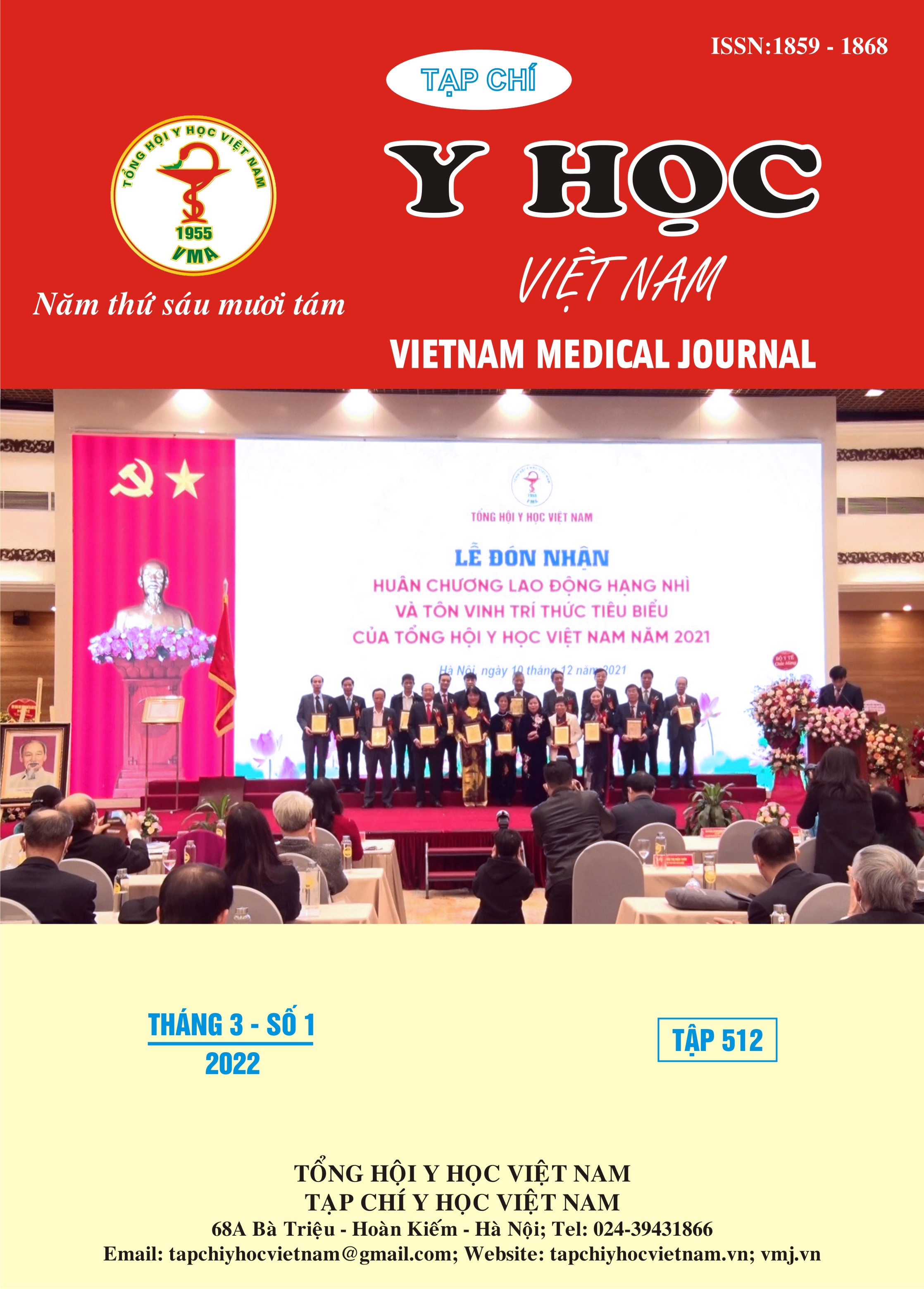INVESTIGATE THE ROUTE OF THE MANDIBULAR NERVE (V3) IN THE INFRATEMPORAL FOSSA ON FRESH CARDIVERS AT THE APARTMENT OF ANATOMY OF UNIVERSITY OF MEDICINE AND PHARMACY AT HO CHI MINH CITY FROM SEPTEMBER 2020 TO JULY 2021
Main Article Content
Abstract
Background: The mandibular nerve is the third brand of the trigeminal nerve and vulnerable the most in the infratemporal fossa. The infratemporal fossa lies beneath the middle skull base, contains various pathologies belong to vast of specifilities and likely co-operate in treatment. Objective: Investigate the corelation of brands of the mandibular nerve with oval foramen, lateral pterygoid plate, zygoma and posterior wall of maxillary sinus. Methods: Cross-sectional descriptive study. From September 2020 to July 2021, we dissected and measured 20 infratemporal fossas in fresh cadavers at the apartment of Anatomy of University of Medicine and Pharmacy at HCM city. Results: Distances from bifurcation of the main branch, posterior branch and the bifurcation to lingual nerve and chorda tympani nerve to the oval foramen are 5,23±0,83 ; 10,1±1,88 ; 21±1,97mm respectively. The anatomic corelation between the bifurcation to lingual nerve and chorda tympani nerve with the oval foramen, spinosum foramen are indicated under equation: BDLTN = 16,13 + 1,41 × BDG. Discussion: Depend on the anatomic corelation of branches of the mandibular nerve with surrounded anatomy structures, we promote an equation that could help surgeons.
Article Details
Keywords
infratemporal fossa, mandibular nerve, lingual nerve, chorda tympani, anatomic corelation
References
2. Gibelli, D., M. Cellina, G. Oliva, et al., Localization of Foramen Ovale According to Bone Landmarks of the Splanchnocranium: Help for Transforaminal Surgical Approach to Trigeminal Neuralgia. J Craniofac Surg, 2021. 32(2): p. 762-764.
3. Joo, W., T. Funaki, F. Yoshioka, et al., Microsurgical anatomy of the infratemporal fossa. Clin Anat, 2013. 26(4): p. 455-69.
4. Patil, Jyothsna, Naveen Kumar, Mohandas Rao K G, et al., The foramen ovale morphometry of sphenoid bone in South Indian population. Journal of clinical and diagnostic research : JCDR, 2013. 7(12): p. 2668-2670.
5. Tiwari, R., Surgical landmarks of the infratemporal fossa. J Craniomaxillofac Surg, 1998. 26(2): p. 84-6.
6. Vrionis, F. D., W. G. Cano, and C. B. Heilman, Microsurgical anatomy of the infratemporal fossa as viewed laterally and superiorly. Neurosurgery, 1996. 39(4): p. 777-85; discussion 785-6.
7. Dare, Folabo, Maria Ruiz, and Tafline C. Crawford, Variation of the Chorda Tympani in the Infratemporal Fossa. The FASEB Journal, 2010. 24(S1): p. 446.9-446.9.
8. Erdogmus, Senem, Figen Govsa, and Servet Celik, Anatomic Position of the Lingual Nerve in the Mandibular Third Molar Region as Potential Risk Factors for Nerve Palsy. The Journal of craniofacial surgery, 2008. 19: p. 264-70.
9. Kantola, V. E., G. W. McGarry, and P. M. Rea, Endonasal, transmaxillary, transpterygoid approach to the foramen ovale: radio-anatomical study of surgical feasibility. The Journal of Laryngology & Otology, 2013. 127(11): p. 1093-1102.
10. Kaplan, Metin, Fatih Serhat Erol, Mehmet Faik Ozveren, et al., Review of complications due to foramen ovale puncture. Journal of Clinical Neuroscience, 2007. 14(6): p. 563-568.
11. Liu, Longping, Robin Arnold, and Marcus Robinson, Dissection and Exposure of the Whole Course of Deep Nerves in Human Head Specimens after Decalcification. International journal of otolaryngology, 2012. 2012: p. 418650.
12.Shinohara, Haruyuki, Izumi Mataga, and Ikuo Kageyama, Discussion of clinical anatomy of the lingual nerves. Okajimas folia anatomica Japonica, 2010. 87(3): p. 97-102.


